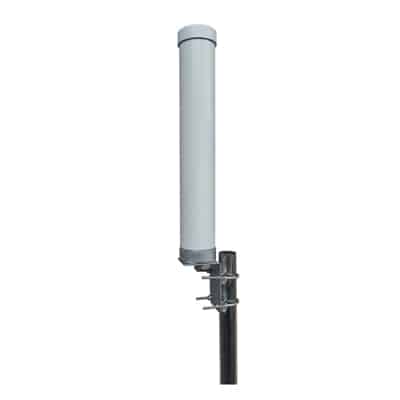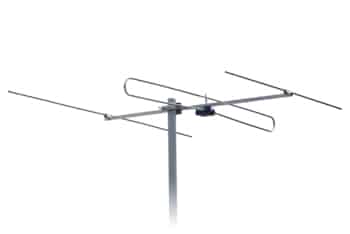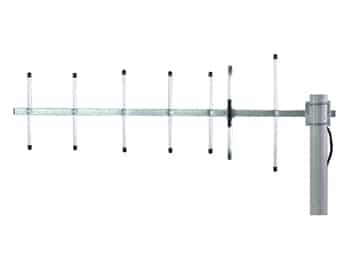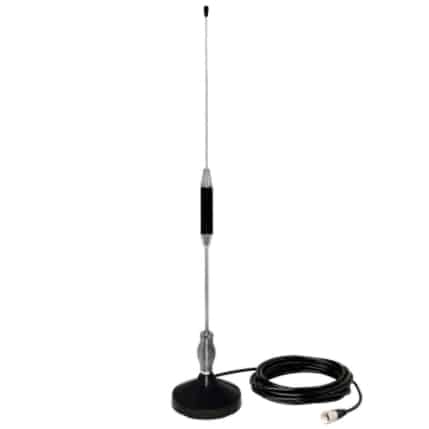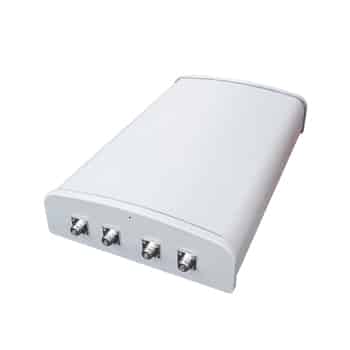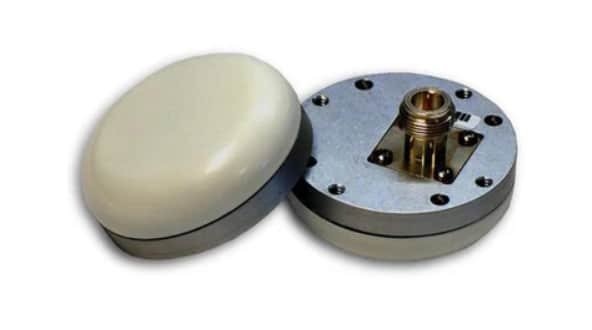
A LoRa antenna is an essential component in a LoRa (Long Range) communication system. These antennas enable the transceivers to send and receive data over extended distances without consuming significant power, which makes LoRa technology highly suitable for IoT applications that require broad coverage and energy efficiency.
By installing LoRa antennas, various devices connected in a LoRa network can communicate seamlessly across many kilometers, even in environments with dense urban networks. Understanding the design and functionality of LoRa antennas is important in optimizing network performance and ensuring reliable data transmission.
LoRa antennas form the core of many IoT solutions by facilitating connectivity across multiple devices. Some of the significant advantages of LoRa antennas are their ability to offer penetration through obstacles like buildings and maintain low power consumption. This makes them especially beneficial in applications where devices are spread over wide areas while maintaining prolonged operation with battery power. The correct placement and selection of the appropriate LoRa antenna can significantly influence the efficiency and reliability of the entire network, which directly impacts the performance of connected devices. The role of LoRa antennas extends beyond signal transmission. They play an important part in ensuring network scalability, allowing for the integration of additional devices without changing much of the existing infrastructure.
In this article, we will provide a comprehensive guide to LoRa antennas, their importance in LoRa communication systems, how they work, the various types available, and the factors to consider when choosing the right antenna for your specific needs. We will also discuss the applications, benefits, challenges, and best practices associated with LoRa antennas to help you optimize your IoT deployments.
Table of Contents
ToggleWhat are LoRa and LoRaWAN
LoRa technology has revolutionized the IoT industry by combining low power consumption with long-range communications. It allows devices to wirelessly connect over long distances as 15 kilometers in rural settings and several kilometers in dense urban environments. LoRa technology operates on unlicensed frequency bands, offering a cost-effective solution for deploying IoT networks without the need for extensive licensing fees. Its ability to fit into existing systems without significant infrastructural changes makes it an attractive choice for sectors looking to innovate rapidly and in an efficient way.
From monitoring environmental conditions and optimizing agricultural practices to enhancing urban infrastructure, LoRa’s framework supports a huge range of applications. It makes IoT implementations more feasible by reducing costs associated with data communication, primarily through its extended battery life and reduced need for infrastructure. These factors are important for ensuring the long-term sustainability of IoT solutions that aim to improve resource efficiency and connectivity.
Furthermore, LoRa’s adaptive data rate feature allows it to dynamically adjust to local conditions, optimizing power consumption and network capacity. This adaptability ensures that devices can maintain efficient operations even in changing conditions, which is essential for applications like smart cities where data demands can be highly variable.
LoRaWAN (Long Range Wide Area Network) is a communication protocol and system architecture designed for the Internet of Things (IoT) applications. It is built on LoRa (Long Range) radio modulation technology and enables devices to communicate wirelessly over long distances with low power consumption. LoRaWAN is often used in applications such as smart cities, agriculture, industrial monitoring, and environmental monitoring, where long-range, reliable, and energy-efficient communication is essential.
How LoRa Antennas Work
LoRa antennas achieve signal transmission and reception through the deployment of spread spectrum technology, which spreads the signal over a wide frequency band. This is called the Chirp Spread Spectrum. This increases resistance to interference and enables effective communication over large distances even with minimal transmission power. They convert electrical power into radio waves on transmission and vice versa on reception. The antenna design whether it’s omnidirectional or directional plays a crucial role in determining how signals are propagated through the environment.
The conversion process from electrical signals to electromagnetic waves and back is what facilitates the wireless communication inherent in LoRa systems. Transmitting involves modulating an information signal with a carrier wave within a specific frequency range. This signal encounters various conditions as it travels, like buildings or trees that can degrade signal quality. However, the spread spectrum nature of LoRa allows these signals to penetrate obstacles more efficiently than narrowband signals, providing robust communication even in non-ideal conditions.
Effective signal reception involves capturing these modulated signals and demodulating them to transform into digital data that can be processed by IoT devices. The antenna’s ability to differentiate between noise and the intended signal is also crucial, which often relies on advancements in signal processing and filtering technologies. These capabilities allow LoRa networks to maintain high data integrity and minimize packet loss, which are important for reliable IoT applications.
What is the Frequency of LoRa Antennas?
LoRa antennas are designed to operate on multiple frequency bands, which can vary significantly by region due to regulatory requirements.
The primary frequencies used include,
433 MHz lora: This frequency is commonly used in the Asia-Pacific regions as it offers favorable propagation characteristics for penetrative and reflective environments.
868 MHz lora: Predominant in Europe, this band supports industrial, scientific, and medical (ISM) communications, providing good balance between range and capacity.
915 MHz lora: Used in North America, this frequency is similar in performance attributes to 868 MHz, supporting longer-range communications with reasonable device power requirements.
2.4 GHz lora: Though less common for conventional LoRa, the 2.4 GHz band provides higher data transfer rates and is ideal for environments needing a balance of range and bandwidth, often at the expense of slightly increased power consumption.
The choice of frequency band is critical in designing a network that aligns with both local regulatory environments and the specific communication needs of the application. The flexibility in frequency allows developers and operators to design systems that comply with local terms while maximizing the performance of the IoT devices involved.
Types of LoRa Antennas
Now, we’ll discuss on some of the LoRa Antenna types in the market. Each type of LoRa antenna is designed to address specific communication needs and environmental challenges.
Panel LoRa Antenna
The panel lora antenna consists of a flat panel that can be easily mounted to a wall or any other surface. They are particularly effective for covering wide, sectoral areas such as large fields and are typically used in stationary setups where constant communication over an extensive area is necessary.
Yagi LoRa Antenna
LoRa Yagi Antennas are known for their high directional gain. They are used in scenarios requiring long-distance point-to-point communications. They focus the signal in a narrow beam, which can significantly extend communication ranges while reducing interference from signals coming in from other directions.
Sector LoRa Antenna
The sector lora antenna provides a focused sector of coverage, often used in base stations. They can segment the coverage area into different sectors, reducing interference and allowing for a more organized distribution of network resources.
Fiberglass Omni LoRa Antenna
These fiberglass omni lora antennas are built for durability, fiberglass antennas can bear harsh environmental conditions, making them suitable for both fixed and mobile applications in outdoor environments. The installation process is very simple and easy. These are suitable for base stations, car radios, outdoor IoT Devices etc.
Rubber Duck Antenna
These antennas are compact and flexible, and provide broad, omnidirectional coverage. These antennas are made out of rubber/plastic housing and copper/aluminum inside. They’re common in personal devices due to their size and durability and are suitable for urban settings where devices need to maintain consistent connectivity with moving endpoints.
Whip Antenna
These antennas are form of a monopole antennas, which are generally used in applications where flexibility and ease of installation are a priority. These antennas offer reasonable performance across various terrains and are often favored for their simple design and maintenance.
Understanding the application environment and communication requirements is key to selecting the most appropriate antenna type to maximize network connectivity.
Applications of LoRa Antenna
LoRa antennas can be used in wide variety of applications by offering reliable and extensive coverage. We have previously discussed the use of Lora antennas, and now let’s discuss specific cases in more detail.
Smart Cities
Within urban environments, LoRa antennas enable efficient management systems through enhanced monitoring and data collection in traffic control, waste management, and resource allocation. The reliable communication facilitated by LoRa networks enhances operational efficiency and urban planning.
Agriculture and Smart Farming
Farmers utilize LoRa technology for monitoring crop conditions, equipment status, and environmental conditions. The ability to gather comprehensive field data leads to smarter water usage, pest management, and more efficient harvesting schedules.
Industrial IoT
LoRa antennas in industrial settings facilitate machine-to-machine communication, improving automation and process standardization. This enhances operational efficiencies and safety through continuous monitoring of machinery and environmental conditions.
Environmental Monitoring
These networks enable the widespread collection of environmental data such as air quality, weather conditions, and pollution levels, critical for research and timely response to environmental threats.
Logistics and Supply Chain Management
In logistics, LoRa enhances tracking and management of goods in transit, improving inventory management and reducing losses due to inefficiencies and fraud.
Asset Tracking
In various industries, LoRa technology supports real-time tracking of valuable assets, optimizing management and ensuring security through reliable monitoring solutions.
Choosing the Right LoRa Antenna
In order to get the best performance from your wireless network, selecting the appropriate LoRa (Long Range) antenna is crucial. The antenna plays a key role in determining the quality of your communication signals, especially in LoRa applications where long-distance and low-power transmissions are essential. This process requires a comprehensive evaluation of several key factors to ensure that your antenna aligns with the specific operational needs and regulatory requirements.
Frequency Compatibility
One of the important considerations that you need to make is ensuring that the antenna is compatible with the specific frequency band utilized in your location. LoRa technology operates on different frequency bands globally, such as 433 MHz in Asia, 868 MHz in Europe, and 915 MHz in North America. Following the local radio frequency regulatory standards is compulsory to avoid interference with other communication systems. Utilizing an antenna designed for the correct frequency band maximizes efficiency and signal strength, which is critical for maintaining reliable communication links.
Gain Requirements
The antenna gain is a measure of how well it directs radio frequency energy in a particular direction. The required antenna gain should align with the range and directionality needs of your network. A higher gain antenna can extend the communication distance by focusing the energy, but it often narrows the signal’s beamwidth, which might be beneficial in certain directional applications. For applications requiring coverage over a broad area, a lower gain, omnidirectional antenna may be more suitable. Therefore, understanding the trade-offs between gain and coverage area is essential in order to maximum network performance.
Radiation Pattern
The radiation pattern of an antenna describes how it radiates energy into space. Deciding between an omnidirectional and a directional antenna depends on your specific communication requirements. An omnidirectional antenna radiates energy equally in all horizontal directions, making it ideal for applications needing coverage over a wide area, such as urban deployments with multiple nodes scattered around.
In contrast, a directional antenna focuses energy in a specific direction, which is advantageous for focused long-distance communication, such as connecting remote sensors located in a particular direction from the base station. Selecting the appropriate radiation pattern ensures efficient energy use and reliable communication.
Environment and Installation Location
Environmental factors and installation locations directly impact antenna performance and longevity. For outdoor installations, the antenna must be weatherproof to endure harsh environmental conditions like rain, wind, temperature extremes, and UV exposure.
Materials like fiberglass or stainless steel are commonly used for their durability. For indoor applications, where environmental stress is minimal, more lightweight and compact antennas may be sufficient.
Additionally, factors like obstructions, interference sources, and mounting height can influence the signal propagation and you should consider them during the selection process.
Antenna Size and Form Factor
The dimensions and form factor of the antenna should align with the aesthetic considerations of the deployment site. In applications where space is limited, such as in urban environments or on compact devices, a smaller, low-profile antenna is preferable. Conversely, larger antennas may offer better performance but could be impractical in certain settings due to their size. Balancing performance with physical constraints ensures that the antenna does not harm the functionality of the device or structure on which it is mounted.
Impedance Matching
Impedance matching between the antenna and the device’s output is crucial to prevent signal reflection and loss. Mismatched impedance can result in significant power being reflected back to the transmitter, causing inefficient transmission and it can damage equipment as well. Proper impedance matching maximizes power transfer and improves signal strength. Utilizing antennas and transmission lines with matching impedance specifications is a fundamental practice in designing the Antenna.
Installation and Mounting Requirements
Examining the physical mounting strategy is essential for a successful installation. You may mount your antennas on poles, rooftops, walls, or embedded within devices.
Each mounting option presents different challenges and may require specific tools and accessories like brackets, clamps, or specialized cables. You need to ensure that the necessary mounting hardware and connection cables are available and compatible with the antenna. That will facilitate a smooth deployment process. Additionally, you need to consider ease of access to the antenna, which saves time and resources at maintenance.
Cost Considerations
Budget constraint is another factor you need to consider in the selection process. While it might be tempting to opt for the most cost-effective solution, it’s important to ensure that the chosen antenna meets performance standards and offers long-term durability. Investing in a higher-quality antenna can lead to better network performance and reduced maintenance costs over time, thereby you can improve operational efficiency. A cost benefit analysis that considers both the upfront costs and the long-term maintenance costs is advisable when selecting an antenna.
Bandwidth and Multi-Band Capability
You have the option to choose an antenna with broader bandwidth or multi-band capability in order to deal with future network demands. As network demands evolve, the ability to support multiple frequency bands allows for adaptability to new technologies. This is particularly relevant in dynamic environments where spectrum allocations may shift, or where additional communication protocols might be integrated into your network infrastructure. Choosing an antenna with sufficient bandwidth ensures that your network remains adaptable to future requirements.
Regulatory Compliance
Compliance with regional regulatory standards is compulsory. Regulations cover aspects such as frequency use, transmission power limits, and emissions. Non-compliance can lead to legal challenges, fines, or forced stopping of operations.
It’s essential to verify that the antenna meets all relevant standards set by regulatory bodies in your country, for example the Federal Communications Commission (FCC) in the United. Ensuring regulatory compliance not only avoids legal issues but also contributes to the responsible use of the radio spectrum.
Antenna Polarization
The polarization of the antenna, whether linear (vertical or horizontal) or circular affects signal integrity and is influenced by environmental conditions and device orientations.
Matching the polarization between transmitting and receiving antennas will maximize signal reception and minimize losses. In environments where the orientation of devices is varying, or reflections and multipath propagation are significant, circular polarization might be suitable. Understanding the operational environment and how polarization impacts signal propagation helps in selecting an antenna that optimizes the communication network.
Future Scalability
Assessing whether the antenna’s capabilities can support network expansion is important for long-term planning. An antenna that can adapt to increased device counts ensures that the network remains functional and efficient as it grows.
Factors such as,
- Additional bandwidth requirements
- Extended coverage areas
- Integration with other technologies
should be considered.
Selecting an lora antenna with scalability in mind can save you costs and effort associated with future upgrades or replacements.
Considering these aspects in detail helps in optimizing your LoRa network for performance, cost, and operational fit, ensuring effective deployment across various applications.
Benefits of a LoRa Antenna
Deploying LoRa antennas gives you a set of benefits, let’s consider them one by one,
- Long-Range Communication: It facilitates communication across vast areas making it ideal for remote areas and urban landscapes, ensuring required network coverage.
- Low Power Consumption: Due to its low power consumption, it supports battery-powered devices, and is crucial for remote and unreachable installations where frequent battery replacement is impractical.
- Robust Signal Penetration: It is capable of transmitting signals through common obstructions like buildings and trees, ensuring minimal signal loss and maximizing network availability.
- Cost-Effectiveness: Reduces infrastructure requirements and operational costs, because of the possibility to manage multiple devices through fewer base stations.
- Wide Frequency Range Support: It offers to be adaptable across various applications, supporting a wide range of regional radio frequency needs.
- Secure and Reliable Data Transmission: It can utilize encryption to ensure the integrity and confidentiality of transmitted data.
- Low-Cost Network Expansion: In Lora networks adding devices or extending coverage comes at a lower cost since it can use existing infrastructure without incurring more investments.
- Support for Various Applications: These antennas are versatile and are suited to many industry needs, from agriculture to logistics and urban management, making them adaptable in dynamic environments.
Challenges and Limitations of LoRa Antenna
Despite their benefits, LoRa antennas have several limitations. Now let’s discuss them in detail.
- Limited Bandwidth: These are suitable for small data packets but not for applications requiring high data rates such as video streaming.
- Interference: Interferences in LoRa systems can be possible in high dense RF environments where multiple devices operate within similar frequency ranges which can lead to communication interruptions.
- Spectrum Regulations: The unlicensed ISM bands which are subject to regional variations are complicating the process, if you are planning to deploy the system internationally.
- Latency: Higher data transfer latency compared to some other communication protocols, make LoRa less suitable for applications in need of real-time data exchange like real time robotic control systems.
Awareness of these challenges maximizes efficient network implementation while preparing for potentially operational constraints.
Antenna Installation Best Practices
When installing the LoRa Antenna, there are some practices you need to follow in order to optimize the network system. Let’s discuss them briefly,
- Ensure proper alignment for maximum signal strength and reliability against potential interference.
- Secure mounting to withstand various weather and environmental impacts, ensuring longevity.
- Use high-quality, compatible cables and connectors like SMA, N, and TNC, which ensure secure and consistent connections, minimizing data loss.
- Perform regular inspections to identify any physical damages or changes in environmental conditions that may affect signal quality.
By following these practices, you can ensure that installations meet both performance expectations and practical deployment requirements.
Impact of LoRa Antennas on IoT Development
LoRa antennas are impacting the development of IoT industry hugely, as they are having low power consumption and long range. Through Lora, it enables economically unfeasible IoT applications which are stopped due to high power consumption. Through that it supports growth of IoT ecosystems, reducing the technological and fiscal barriers to entering new markets.
Conclusion
LoRa antennas play a main role in enabling robust and scalable IoT networks. With their adaptability, cost-effectiveness, and long-range capabilities, they improve connectivity and data integrity across a variety of applications, making significant impacts on the evolution of communication technology.
As IoT growth continues, LoRa antennas will remain critical in supporting widespread integration and innovation.

